- Learning time
- 30 minutes
- First play time
- 60 minutes
Let´s Make a Bus Route: The Dice Game
Designed by: Saashi
As you might expect of this name, in Let’s Make a Bus Route (and it’s non-dice predecessor, that hosts up to four players) players are making bus routes. Or more accurately, perhaps, they are travelling bus routes, in the style of well-meaning and community-minded, but mildly unhinged bus-driving psychopaths. At the start of the game, no routes exist! The city lies before you like an empty grid of passengers waiting to be serviced, and destinations they want to get to. Delivering passengers to these places is where success lies. But like all the best bus routes, common sense comes secondary to the geometric desires of these bonkers route planners…
Players each have a personal board where they mark off passengers and destinations, and you take turns rolling the six dice, which represent different types of passenger plus the No Entry sign – more on that shortly. The dice-rolling player takes three of the results – their choice – and crosses off these passengers on their board. The passengers will score either at the end of the game (students/OAPs/families) or when the bus route reaches various destinations (workers/tourists). How do you determine your route? Well, every time you’re the non-dice-rolling player you choose one of the leftover dice for yourself: each face of the die also represents a section of route that your draw onto the shared city board – which is how you know x passengers have reached y destinations. There are traffic penalties (-minus points) if you share a road or go through a congested area, and you can take ‘voluntary’ penalties by amending the assigned route by adding or ignoring a turn in it. If you end your movement on a traffic light, you get to spring another space further on.
Players continue taking turns to roll and collect passengers/extend their route. After 12 rounds taking turns to roll/assign, the game ends – though beware! Your route options are finite and you may find your bus unable to move in the last round or two – and players tally scores. One more thing to mention: that No Entry face on the dice. For the route-drawing player, it’s just another route option. For the dice-rolling player, they can help give you extra flex in your options, by conjuring up free dice rerolls and/or the ability to choose a die side (only once per game). It all looks pretty nuts, and sounds pretty nuts, but after a game or two it makes it’s own crazy sense, and plays nice and quickly too.
At time of writing, (sadly!) unavailable in the UK. The check availability link (top right) offers links to the very similar big brother game that plays up to four
The guru's verdict
-
Take That!
Take That!
A little, for sure. Particularly in the late stages, as the dice-rolling player you can choose to leave dice for your opponent that they can't action, because they've already crossed those route shapes off. Buses can also 'get in each other's way' in that sharing a road does cost you points - and this can be capitalised on by shrewd drivers.
-
Fidget Factor!
Fidget Factor!
Moderately high at first, but dropping substantially with familiarity
-
Brain Burn!
Brain Burn!
It's about juggling long and short-term gains, and trying to keep your route options open for as long as you can!
-
Again Again!
Again Again!
The city map itself offers so many options it'll be a while before it feels over-familiar, and even then the dice in each round sow in elements of tactical play and risk/reward.


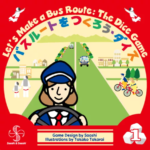
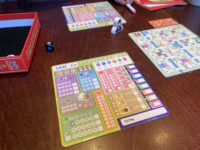
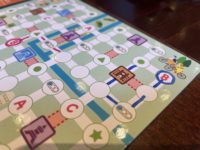

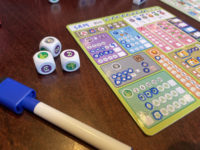



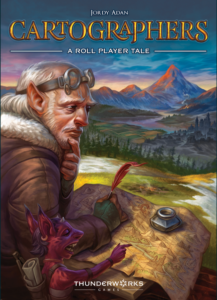



Sam says
I'm not sure the real Kyoto looks exactly like this, but if the theme is a little abstracted - not to mention bananas - the game is a decent chunk of fun, demanding you make decisions that always seem to deny you opportunity almost as much as they reward. To really enjoy it, players need to be onboard with the mild agonising as well as the rampant buses. Also with the screwy take-that moments as you deprive yourself of a few points late-game in order to deprive them of moving their bus at all! I have yet to encounter a Saashi game I didn't enjoy - they're always beautifully made, great fun, and mildly insane.